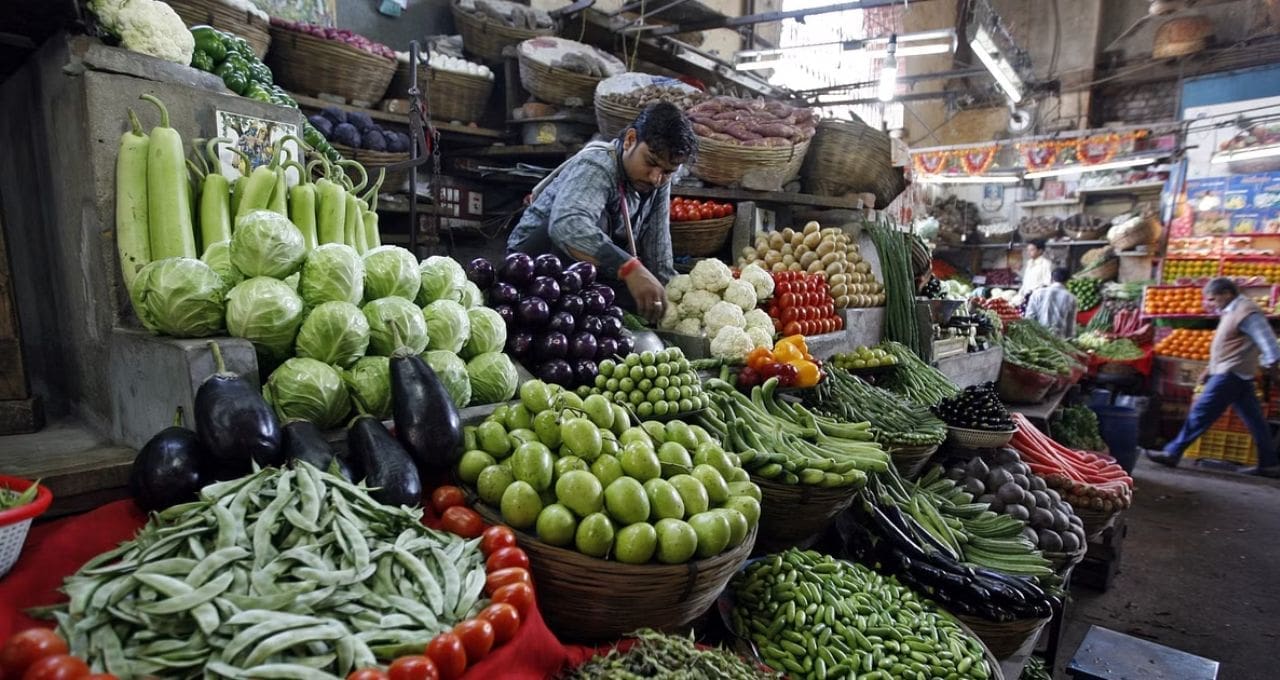India’s retail inflation declined for the second consecutive month, tracing its way back to the RBI’s tolerance band. The CPI inflation printed at a 15-month low of 5.7% in March and was in line with our expectation (CareEdge – 5.7%). Apart from a favourable base effect, the relief came from a moderation in food inflation with its share in overall inflation falling to 41.3% from 49.3% a year ago. While vegetables continued in deflationary mode, cereals inflation also moderated in response to the government’s intervention of improving wheat supplies. Core inflation cooled marginally to 6.1% (from 6.3% in Feb) but was still elevated as the key core components such as housing and healthcare witnessed further firming. In a major respite to rural consumers, CPI-rural eased to 5.5% from 6.7% a month ago.
With March data, the CPI inflation averaged at 6.2% in Q4 FY23 and 6.7% for the full fiscal year. Food inflation has remained elevated throughout the year but there has been a shift in the underlying driving factor. Edible oil inflation which was in double digits in Q4 FY22 is now on deflationary trend whereas, cereals inflation is now four times higher compared to a year ago. Also, milk has become dearer compared to a year ago.
Food and beverage inflation eased to 5.1% in March from 6.3% in the previous month aided by a high base and deflation in vegetables, edible oils and meat and fish category. The impact of supply side measures to cool wheat prices was reflected in moderation of cereals inflation to 15.3% from its record high level of 16.7% a month ago. The retail price of wheat fell (month-on-month) for the first time in 19 months but was still significantly higher compared to a year ago reflected in double-digit annual inflation print. Though the second advance estimate has projected for a record foodgrain production, the damage caused due to the unseasonal rains in the several parts of the country since mid-March could pose upside risk to prices of cereals and perishable items such as fruits and vegetables.
Due to a demand-supply mismatch milk inflation has remained elevated at 9.3%. The supply of milk has been impacted with a lumpy skin disease infecting millions of cattle in late 2022. Limited supply coupled with high fodder and transportation costs led to multiple rounds of price hikes by dairy suppliers across the country.
Fuel and light inflation moderated to 8.9% from 9.9% in the previous month. Since the beginning of FY22, fuel and light inflation has remained elevated above 6% primarily on account of double-digit growth in LPG and kerosene prices. In March, the inflation in LPG category firmed further and continued in double-digits owing to hike in LPG prices, however, a significant moderation in PDS-Kerosene category kept the momentum in check.
Housing, which constitute almost one-tenth of the overall CPI basket, has seen an uptrend (barring Dec 2022) in inflation since the beginning of this fiscal mainly due to rising rentals. In March, housing inflation rose to 5%, highest print in almost four years. This poses an upside risk to the outlook of core inflation.
In the coming months, a favourable base and some waning of pent-up demand will help in pulling headline CPI prints down. A stable outlook for Rupee and lower commodity prices will also work in favour of domestic inflation. Having said that, the impact of unseasonal rains in March on Rabi crops, especially wheat could pose an upside risk to the food inflation. The risk will get compounded if the monsoon turns unfavourable. Additionally, any major rebound in global crude oil prices due to production cut in major producing countries pose a threat to the domestic inflation.
Taking all factors into account, we maintain our FY24 CPI inflation forecast at 5.1% with Q1 print at 4.8%. Some pick-up in inflation can be witnessed in the second half of the fiscal but it will likely stay within the RBI’s target range. The core inflation will also ease gradually as the impact of past rate hikes play out. With CPI inflation expected to moderate in the coming months and an improvement in the household’s inflationary expectation, we can expect a status-quo on RBI’s policy rate hike in FY24. With average CPI inflation expected around 5% in FY24
(higher than RBI’s target of 4%) and GDP growth around 6%, we do not expect RBI to start cutting the rates in FY24.

